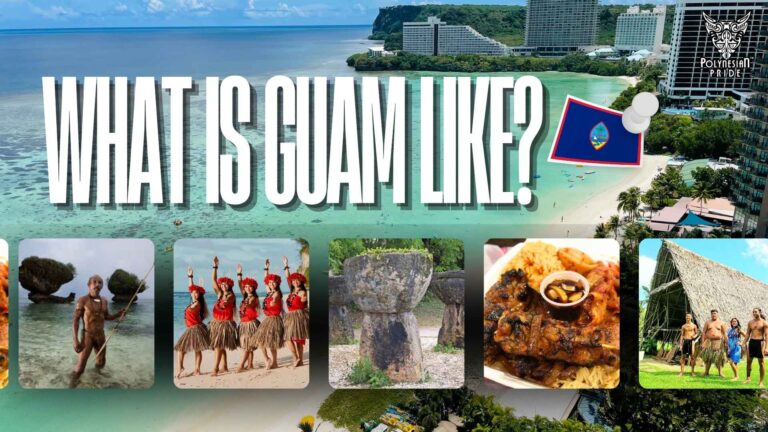Traditional Tongan Clothing: Sacred Style with Deep Meaning

INTRODUCTION
Traditional Tongan clothing is a vibrant expression of the Kingdom of Tonga’s rich cultural heritage. Deeply rooted in history and social customs, these garments are not merely attire but symbols of identity, respect, and tradition. This article delves into the significance, styles, and cultural contexts of traditional Tongan dress, offering insights into how these garments embody the essence of Tongan society.
The Essence of Traditional Dress in Tonga
The Connection Between Clothing and Identity
In Tonga, clothing serves as a powerful marker of personal and communal identity. Traditional attire conveys messages about the wearer’s social status, familial ties, and adherence to cultural norms. By donning specific garments, Tongans express their belonging and commitment to societal values.
Social Symbolism: Status, Respect, and Occasion

Traditional Tongan clothing is imbued with social symbolism. Garments like the ta‘ovala and kiekie are worn to show respect during formal events, religious ceremonies, and daily interactions. The type and quality of attire can indicate the wearer’s rank, the significance of the occasion, and the level of respect accorded to others.
Fabric and Design: A Harmony of Nature and Culture
Tongan traditional attire showcases a harmonious blend of natural materials and cultural artistry. Fabrics such as ngatu (tapa cloth) and woven pandanus are adorned with intricate patterns and motifs, each telling stories of heritage and ancestral wisdom. These designs beautify the garments and serve as cultural narratives passed down through generations.

Traditional Tongan Clothing for Men
Tupenu for Men: Everyday and Formal Use

The tupenu is a fundamental piece of Tongan male attire, resembling a wraparound skirt or sarong. Worn daily, it typically extends to the knees or shins and is paired with various tops, from casual T-shirts to formal dress shirts. For official occasions, the tupenu is often tailored from finer fabrics and may be accompanied by a suit jacket.
Ta‘ovala: Sign of Respect and Social Standing

The ta‘ovala is a woven mat wrapped around the waist and secured with a kafa (traditional rope). Worn by both men and women, it signifies respect and adherence to cultural protocols. The ta‘ovala varies in size and intricacy, with specific styles designated for events like weddings, funerals, and royal audiences.
Kafa: The Sacred Cord and How It’s Used
The kafa is a cord used to tie the ta‘ovala around the waist. Traditionally made from braided coconut fiber or human hair, the kafa holds cultural significance, symbolizing the binding of the wearer’s commitment to societal values and respect for tradition.
Traditional Tongan Clothing for Women
Tupenu and Kofu: Graceful Island Elegance

Tongan women also wear the tupenu, typically longer than the men’s version, reaching the ankles. It is often paired with a kofu (dress) that complements the tupenu, creating an ensemble that embodies modesty and grace. These combinations are suitable for both everyday wear and formal occasions.
Kiekie: Decorative Yet Meaningful

The kiekie is a decorative girdle or belt worn by women, often during semi-formal events. Made from materials like pandanus leaves, hibiscus fiber, or modern alternatives, the kiekie adds an element of adornment while maintaining cultural significance. It represents femininity and respect for tradition.
Women’s Ta‘ovala: For Ceremonial Purposes

Similar to men, women wear the ta‘ovala during significant ceremonies and formal gatherings. The style and quality of the ta‘ovala can denote the nature of the event and the wearer’s social standing, underscoring the garment’s role in conveying respect and propriety.
How Clothing Reflects Occasion and Ritual
Dressing for Church, Funerals, and Weddings

Attire in Tonga is carefully chosen to reflect the solemnity or joy of various occasions. For church services, modest and formal clothing is expected, often featuring the ta‘ovala or kiekie. Funerals call for specific types of ta‘ovala, with larger, coarser mats symbolizing mourning. Weddings showcase finely woven, decorated ta‘ovala, highlighting the celebratory nature of the event.
Importance of Presentation in Community Gatherings
In community gatherings, presentation through attire demonstrates respect for the collective and adherence to social norms. Proper dress fosters a sense of unity and cultural pride, reinforcing communal bonds and shared values.
Differentiation by Gender, Age, and Rank


Traditional clothing also differentiates individuals by gender, age, and social rank. For instance, certain styles or qualities of ta‘ovala may be reserved for elders or individuals of high status, while specific adornments like the kiekie are typically associated with women. These distinctions within Tongan attire help maintain social structure and cultural continuity.
Etiquette and Legal Rules Around Dress in Tonga
Tongan society strongly emphasizes modesty and respect, which is prominently reflected in its dress codes. Understanding these cultural norms is essential for both locals and visitors to ensure harmonious interactions within the community.
What to Wear in Public

In public settings, Tongans adhere to conservative dress standards. Men typically wear the tupenu, a cloth wrap similar to a sarong, paired with a shirt. Women also wear the tupenu, ensuring it extends below the knees, complemented by a blouse or dress that covers the shoulders. Revealing clothing is discouraged, especially in villages, as it may be considered disrespectful. Visitors are encouraged to follow these guidelines to show respect for local customs.
Swimwear Etiquette
When it comes to swimming, Tongans often swim fully clothed and do not typically wear bathing suits. They may find it unusual for travelers to do so. It’s important to note that it is against the law in Tonga to be topless in public for both men and women. However, if you are staying at tourist accommodations, this law doesn’t apply.
What’s Expected for Church and Sundays

Sunday holds profound significance in Tonga, and it is dedicated to rest and worship. Under Tongan law, business activities and work are prohibited on Sundays, and public transport is unavailable. Attending church services is common, and formal attire is expected. Men often wear a finely woven ta‘ovala over their tupenu, while women don their best dresses, often white, accompanied by a kiekie or ta‘ovala. Hats are customary for women during church services, symbolizing their active participation in the congregation.
Legal Restrictions on Revealing Clothing
Tongan law enforces modesty in public attire. It is illegal for both men and women to appear topless in public spaces. While these regulations are strictly upheld in villages and public areas, tourist accommodations may offer more leniency. Nonetheless, visitors should remain mindful of these laws to avoid unintentional disrespect or legal issues.
Evolution of Traditional Dress

Tongan traditional clothing has evolved through history, shaped by cultural exchanges, Christianity, and modern influences. When missionaries arrived in the 19th century, they introduced new standards of modesty, encouraging more covered attire. This led to a fusion of traditional styles with Western fabrics and aesthetics.
With increased access to global textiles, Tongans began incorporating modern materials, making garments like the tupenu and ta‘ovala more comfortable and versatile. Today’s designs feature vibrant colors and patterns, balancing personal expression with cultural pride.
The Tongan diaspora also contributes to this evolution. Abroad, traditional dress is often blended with local styles, especially during cultural festivals or family events. These adaptations reflect the enduring relevance and flexibility of Tongan identity worldwide.
Experiencing Traditional Clothing as a Visitor
Immersing oneself in Tongan culture offers a unique opportunity to appreciate its rich traditions, particularly through traditional attire. Visitors can engage respectfully and meaningfully by understanding and honoring these customs.
How Tourists Can Respectfully Participate


While tourists are not expected to wear traditional garments such as the ta‘ovala or kiekie, dressing modestly in public is highly valued. Men are encouraged to wear shirts paired with long trousers or the tupenu, a wraparound skirt-like garment, while women should opt for dresses or skirts that cover the knees, complemented by tops that cover the shoulders. This approach demonstrates respect for local customs and reflects awareness of Tonga traditional dress, helping foster positive interactions with the community.
What Not to Do: Avoiding Cultural Missteps
To ensure respectful engagement with Tongan traditions, visitors should avoid:
- Wearing Traditional Attire Inappropriately: Donning garments like the ta‘ovala or kiekie without understanding their cultural significance or without invitation can be seen as disrespectful.
- Dressing Immodestly in Public Spaces: Revealing clothing is discouraged, especially in villages and religious settings.
- Disregarding Local Customs: Failing to observe and adhere to local dress codes, particularly during formal events or church services, can lead to unintended offense.
By being mindful of these considerations, tourists can show respect for Tongan culture and contribute to meaningful cultural exchange.
CONCLUSION
Traditional Tongan clothing serves as a vibrant expression of the nation’s identity, encapsulating its history, values, and social structures. These garments are not mere costumes but are living traditions that continue to play a pivotal role in ceremonial and everyday life. For visitors, understanding and respecting these clothing customs is essential in appreciating the depth of Tongan culture. By engaging thoughtfully and modestly, tourists can honor these traditions and foster genuine cultural connections.
FAQs
1. What is the traditional clothing in Tonga?
Tongans dress modestly, often wearing a tupenu (wrap skirt) with a ta‘ovala (woven mat) tied around the waist. Women may also wear a kiekie—a decorative girdle—especially for semi-formal occasions.
2. What is a Tongan skirt called?
Tongan women wear the ‘uli, a skirt made from dyed pandanus leaves, often paired with a ta‘ovala and sometimes the ‘otuhaka, a ceremonial mat worn over the shoulder.
3. Why do Tongans wear the ta‘ovala?
The ta‘ovala is a traditional woven mat worn around the waist to show respect. It’s commonly used during formal events like church, funerals, or meetings with elders.
4. Why do Tongans wear black?
Black is worn during mourning as a sign of respect. The mourning period—and wearing black—varies depending on how close one was to the deceased.

I am a cultural historian and editor with over 10 years of research into pre-contact Polynesian history, the Lapita migration, and oral traditions. Share the excitement of my latest publications.
My contact:
Email: [email protected]
Tel: +64 21 456 7890






